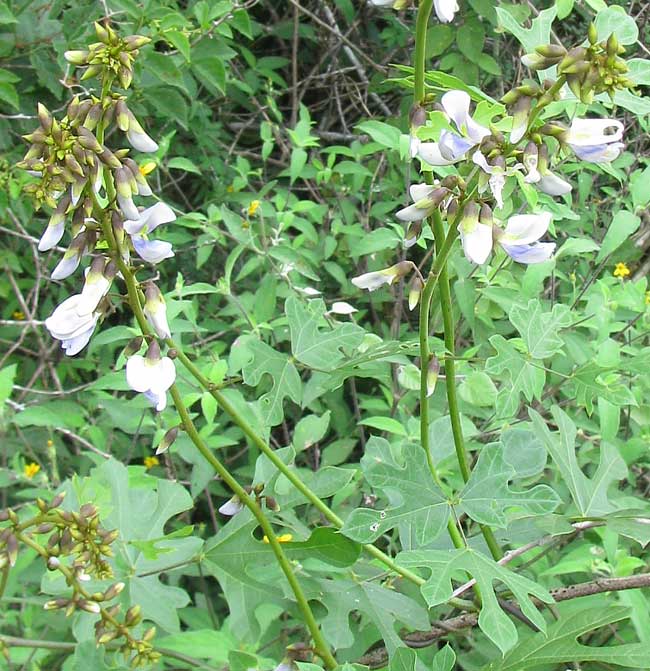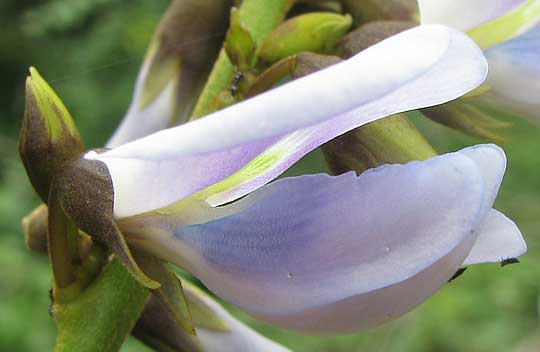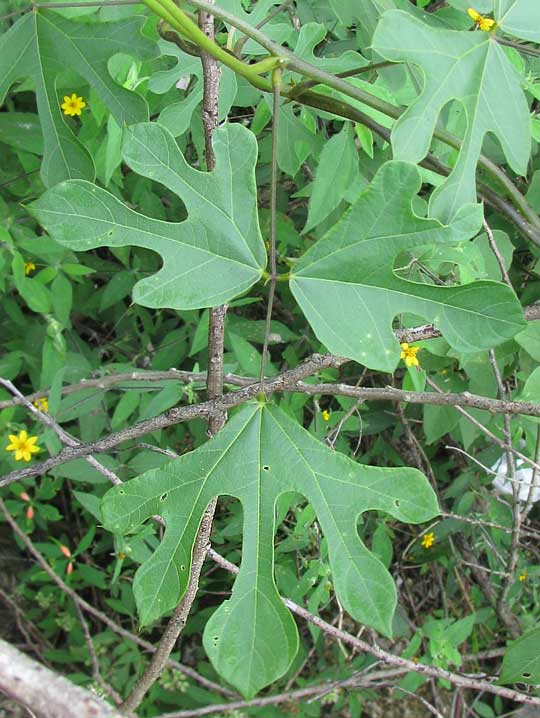Excerpts from Jim Conrad's
Naturalist Newsletter

from the October 3, 2010 Newsletter issued from Hacienda Chichen Resort beside Chichén Itzá Ruins, central Yucatán, MÉXICO; limestone bedrock, elevation ~39m (~128ft), ~N20.676°, ~W88.569°
WILD JÍCAMA
Along the weedy roadside south of Pisté I came upon numerous foot-high racemes of bluish-white flowers emerging from a sprawling mass of leafy vines, as seen above.
The blossoms were fairly distinctive, clearly being "papilionaceous" flowers, or "butterfly-like" flowers of the Bean Family, with ¾-inch long (20 mm) petals all about the same length, and brown, fleshy calyxes. A side view showing the bluish-based wings is below:

A view from above showing the flowers' very broad top petals, or standards, subtended by two yellowish calyx lobes fused to form single, broad, notched lobes is below:

I felt like I'd seen such flowers before but certainly the vines' trifoliate leaves with very deeply lobed leaflets didn't ring a bell at all. They're shown below:

I had to key out the flowers before I realized that this was none other than the Jícama, PACHYRRHIZUS EROSUS, sometimes called Yam Bean, growing right now in the Hacienda's milpa, or traditional cornfield. Its vines, which can reach 30 feet long (9 m) arise from foot-thick (30 cm), starchy tubers that are famously edible and important to the Maya and many other cultures across the world's tropics. But the Jícama leaves I'm used to don't have such deeply lobed leaflets.
Jícama is native to Mexico, so I wasn't too surprised to find it growing wild here. However, the Maya name "Chicam" is reckoned to be a corruption of the Nahuatl name "Jicama," suggesting the theory that the plant was introduced to the Yucatán's Maya by upland Mexican people, Nahuatl being the language of the Aztecs who formerly occupied the area of Mexico City.
All above-ground parts of Jícama, including flowers, pods and seeds, contain rotenone, a chemical much used as an organic insecticide.
In the much outdated and incomplete Flora of the Yucatan, Paul Standley designates such Jícamas as ours with deeply lobed leaflets as Pachyrhizus palmatilobus, but it seems that later authors lumped this variation with the more cosmopolitan P. erosus.